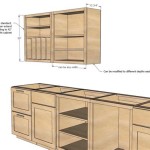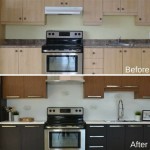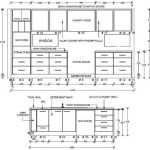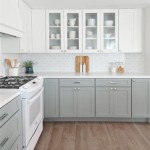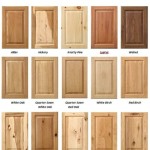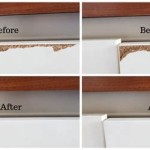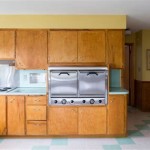```html
Kitchen Cabinet Top: A Comprehensive Guide to Materials, Selection, and Maintenance
The kitchen cabinet top, also known as the countertop, is a critical surface in any kitchen. Serving as the primary workspace for food preparation, cleaning, and various other activities, it must be durable, functional, and aesthetically pleasing. Selecting the right material for a kitchen cabinet top involves careful consideration of factors such as budget, lifestyle, aesthetic preferences, and maintenance requirements. This article provides a comprehensive overview of the most popular kitchen cabinet top materials, exploring their pros, cons, and best uses.
Granite: The Timeless Choice for Kitchen Cabinet Tops
Granite remains a highly sought-after material for kitchen cabinet tops, renowned for its durability, natural beauty, and timeless appeal. As a natural stone, granite exhibits unique variations in color and veining, making each slab one-of-a-kind. This natural variation adds character and visual interest to the kitchen space. The inherent strength of granite makes it resistant to scratches, heat, and stains, making it suitable for high-traffic kitchens. Granite is formed deep within the Earth's crust from volcanic rock slowly cooling over millions of years, resulting in a dense and durable material.
One of the primary advantages of granite is its heat resistance. Hot pots and pans can be placed directly on the surface without causing damage. However, it is still recommended to use trivets to protect the sealant and minimize the risk of discoloration. Granite is also relatively resistant to stains, but it is porous and requires sealing to prevent liquids from penetrating the surface and causing permanent marks. Regular sealing, typically done annually or bi-annually, is necessary to maintain its stain resistance.
Despite its durability, granite is not entirely impervious to damage. Sharp impacts can chip or crack the surface, particularly at the edges or corners. Professional repair is often necessary for significant damage. Furthermore, the cost of granite can be higher compared to other materials, depending on the rarity and quality of the slab. Installation also requires professional expertise due to the weight and size of granite slabs.
The aesthetic versatility of granite allows it to complement various kitchen styles, from traditional to contemporary. Its natural patterns and colors add depth and sophistication to the space. When selecting granite, consider the overall color scheme of the kitchen and choose a slab that harmonizes with the cabinets, flooring, and backsplash.
Quartz: Engineered Stone for Modern Kitchens
Quartz, often referred to as engineered stone, is a manufactured material composed of approximately 90-95% ground quartz and 5-10% resins and pigments. This combination results in a countertop material that is exceptionally durable, non-porous, and aesthetically versatile. Quartz countertops have gained popularity as a practical and stylish alternative to natural stone options.
The non-porous nature of quartz is a significant advantage. Unlike granite, quartz does not require sealing, making it virtually stain-resistant. This makes it easier to clean and maintain, as spills can be wiped away with a damp cloth. Quartz is also highly resistant to scratches and impacts, making it suitable for busy kitchens. Pigments added during the manufacturing process allow for a wide range of colors and patterns, including options that mimic the look of natural stone.
While quartz is heat-resistant, it is not entirely heatproof. Prolonged exposure to high temperatures can cause discoloration or damage. As with granite, it is advised to use trivets under hot pots and pans. Although less prone to chipping than some natural stones, quartz can still be damaged by sharp impacts. Repairing chips or cracks may require professional intervention and color matching.
Quartz countertops offer a consistent aesthetic, with predictable color and pattern variations. This can be an advantage for those seeking a uniform look. However, some may find the engineered appearance less natural than the unique variations found in granite or marble. Cost-wise, quartz is typically comparable to mid-range granite slabs, making it a competitive option for homeowners seeking a durable and stylish countertop.
The design flexibility of quartz allows it to be used in a variety of kitchen styles. It can be fabricated into different shapes and sizes, including integrated sinks and backsplashes. Its non-porous surface also makes it a hygienic choice, as it inhibits the growth of bacteria and mold.
Solid Surface: Seamless and Repairable Countertops
Solid surface countertops are manufactured from a blend of acrylic or polyester resins and mineral fillers. This combination creates a non-porous, seamless surface that is both durable and versatile. Solid surface materials are known for their ability to be molded into various shapes and sizes, allowing for custom designs and integrated sinks.
One of the key advantages of solid surface countertops is their seamless appearance. Seams can be virtually invisible, creating a smooth and continuous surface. This seamlessness contributes to hygiene, as there are no crevices for bacteria or dirt to accumulate. Solid surface countertops are also non-porous, making them resistant to stains and easy to clean. Minor scratches and stains can often be buffed out, extending the lifespan of the countertop.
While solid surface is resistant to stains, it is less heat-resistant than granite or quartz. Hot pots and pans should not be placed directly on the surface, as this can cause scorching or discoloration. Solid surface is also more prone to scratching than natural stone or quartz. However, minor scratches can often be repaired with specialized cleaning products or professional buffing.
Solid surface countertops offer a wide range of colors and patterns, including options that mimic the look of natural stone. The cost of solid surface is generally lower than granite or quartz, making it an attractive option for budget-conscious homeowners. Installation is relatively straightforward, and the material can be easily cut and shaped to fit specific kitchen layouts.
The ability to repair minor damage is a significant advantage of solid surface. Unlike some other materials, scratches and stains can often be removed without requiring professional repair. This contributes to the long-term value and durability of solid surface countertops. However, it is important to follow the manufacturer's care instructions to maintain the appearance and performance of the material.
Laminate: An Affordable and Versatile Option
Laminate countertops are constructed by bonding a thin layer of decorative laminate to a substrate, typically particleboard or MDF (medium-density fiberboard). Laminate is one of the most affordable countertop materials available, making it a popular choice for budget-conscious homeowners or rental properties. Technological advancements have greatly improved the appearance and durability of modern laminates.
One of the primary advantages of laminate is its cost-effectiveness. It is significantly less expensive than natural stone, quartz, or solid surface. Laminate is also available in a wide range of colors, patterns, and textures, including options that mimic the look of wood, stone, or tile. This versatility allows homeowners to achieve their desired aesthetic without breaking the bank.
While laminate is relatively durable, it is not as resistant to scratches, heat, or stains as other countertop materials. Sharp objects can easily scratch the surface, and hot pots and pans can cause scorching or blistering. Prolonged exposure to moisture can also damage the substrate, causing it to swell or delaminate. Laminate countertops require careful maintenance to prevent damage.
Laminate countertops are relatively easy to install, making them a suitable DIY project for experienced homeowners. However, seams are often visible, and the edges can be prone to chipping. Repairing damaged laminate can be difficult, and in some cases, replacement may be necessary. Despite these limitations, laminate remains a popular choice due to its affordability and wide range of design options.
Proper care is essential for extending the lifespan of laminate countertops. Avoid using abrasive cleaners or scouring pads, as these can damage the surface. Wipe up spills immediately to prevent staining or water damage. Use cutting boards to protect the surface from scratches and trivets to protect it from heat. With proper care, laminate countertops can provide years of reliable service.
Wood: A Warm and Natural Aesthetic
Wood countertops offer a warm and inviting aesthetic to any kitchen. Often crafted from hardwoods like maple, walnut, or cherry, wood countertops bring a natural element into the space. There are two primary constructions for wood countertops: butcher block, which consists of small pieces of wood glued together, and solid wood slabs, which are made from a single piece of wood.
The natural beauty of wood is a significant advantage. Each piece of wood has unique grain patterns and color variations, adding character to the kitchen. Wood is also a relatively soft material, which can be easier on knives compared to harder surfaces like granite or quartz. With proper sealing and maintenance, wood countertops can be durable and long-lasting.
However, wood is more porous than other countertop materials, making it susceptible to staining and water damage. Regular sealing with food-safe oils or sealants is essential to protect the surface. Wood is also prone to scratching and denting, and it can be affected by changes in humidity. Proper ventilation and climate control are important for maintaining the stability of wood countertops.
Wood countertops require more maintenance than other materials. Regular oiling or sealing is necessary to protect the surface and prevent staining. Spills should be wiped up immediately to prevent water damage. Cutting boards should be used to protect the surface from scratches, and hot pots and pans should not be placed directly on the wood.
Despite the maintenance requirements, wood countertops offer a unique and desirable aesthetic. They can be customized to fit specific kitchen layouts and design preferences. The warm and natural feel of wood can create a welcoming and inviting atmosphere in the kitchen. With proper care, wood countertops can last for many years and add value to the home.
```
How High Upper Cabinets Should Be From Your Floor And Countertop

11 Best Kitchen Cabinets In 2024 Our Top Picks

Top 10 Characteristics Of High Quality Kitchen Cabinets

20 Top Kitchen Design Ideas That Will Inspire You Oppein

How High Should You Hang Your Upper Kitchen Cabinets

How To Decide Between Upper Kitchen Cabinets Open Storage And More

19 Decorating Ideas For Adding Some Flair To The Top Of Your Kitchen Cabinets Decor Above

Europe Style Painted Solid Wood Kitchen Cabinets Luxury Painting Island Cabinet Granite Top Countertops China Design Made In Com

17 Top Kitchen Design Trends Cabinet Modern Cabinets

The Tricks You Need To Know For Decorating Above Cabinets Laurel Home
Related Posts

